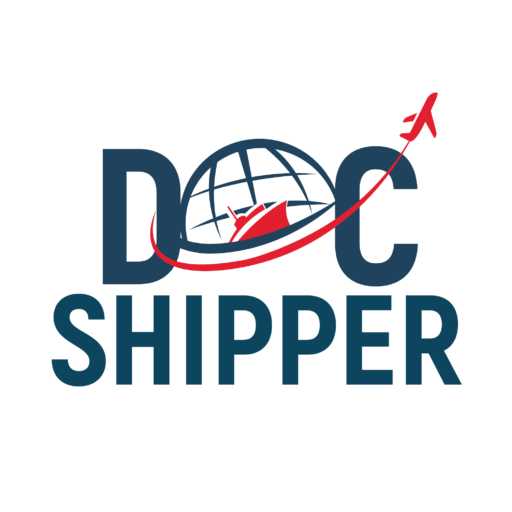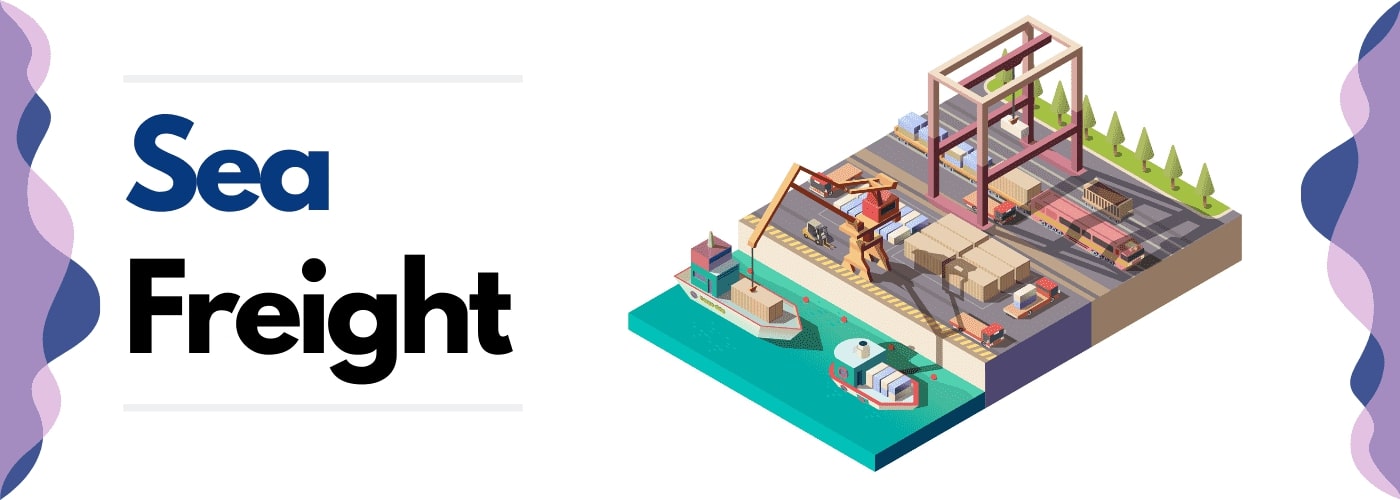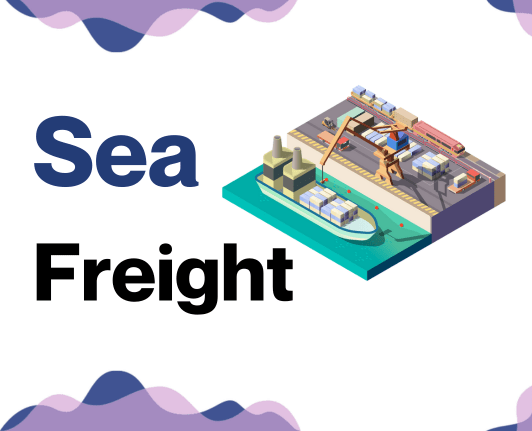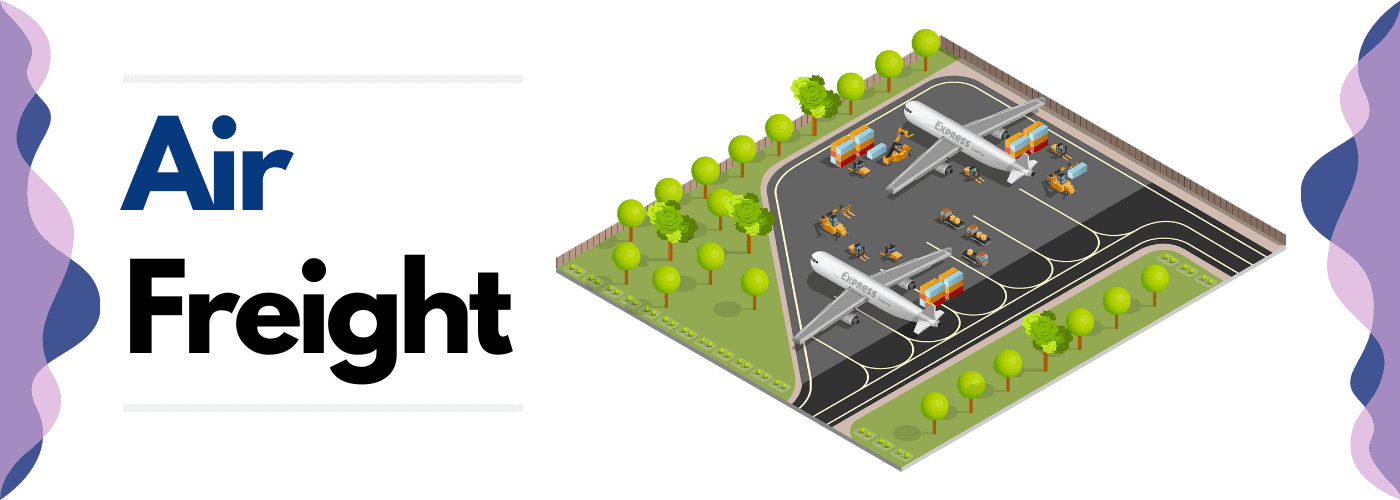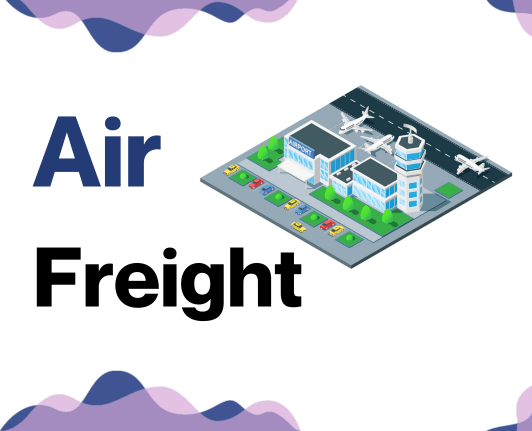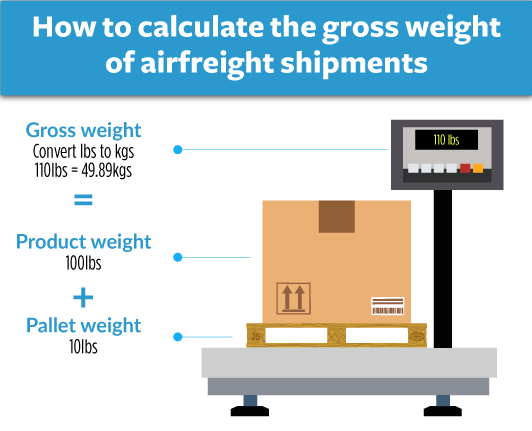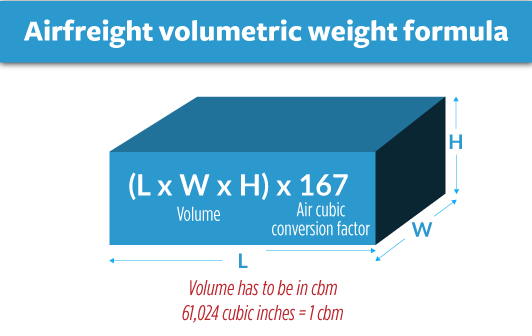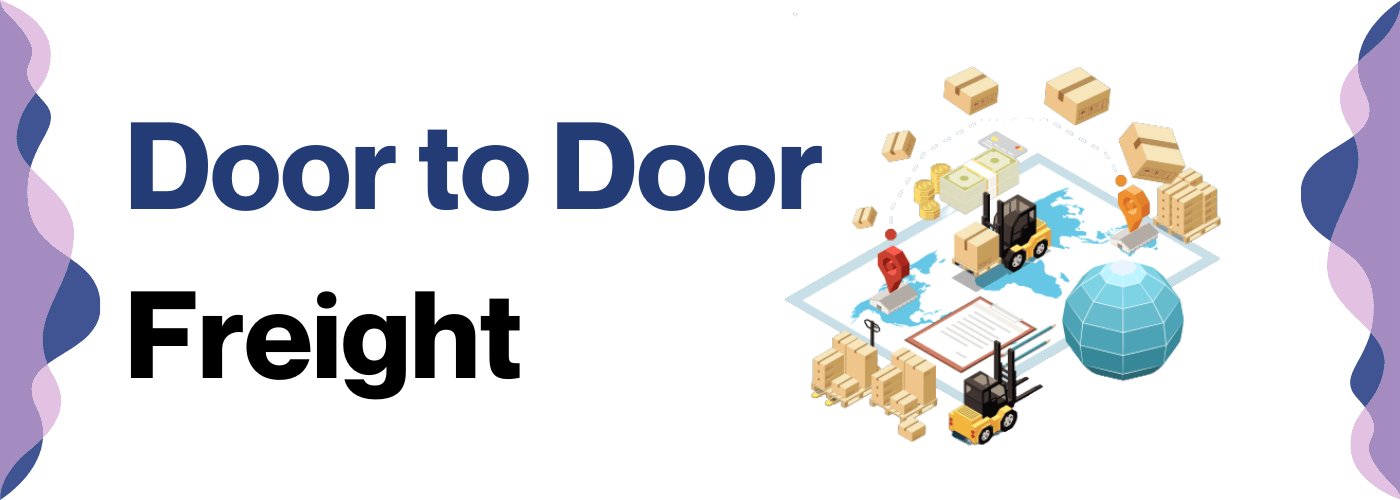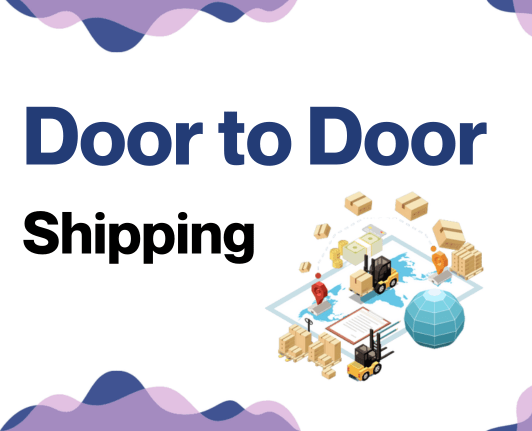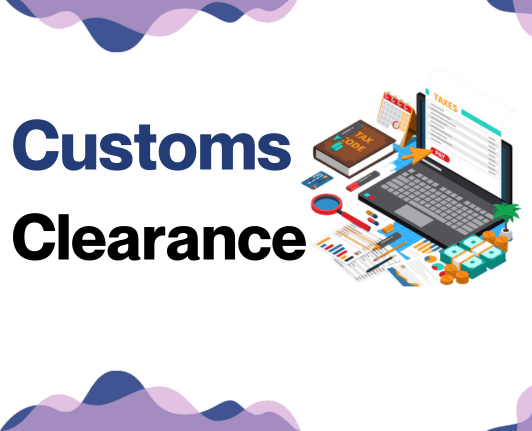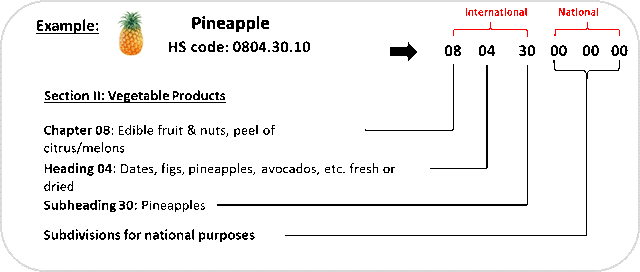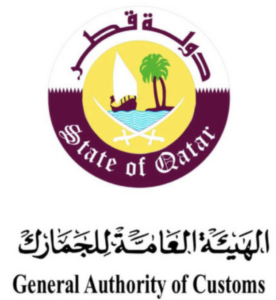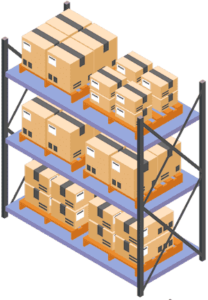Shipping goods between Qatar and Iraq doesn't have to be as complex as finding a camel in a sandstorm! Sure, tackling the nuances of international freight rates, transit times, and customs regulations can be daunting. However, that's where this guide enters the picture. We've designed it to illuminate the path, whether it's air, sea, road, or rail that best suits your needs. We cover everything from the fundamentals of each freight option to demystifying the customs clearance and tariffs. Infused with advice for all kinds of businesses, we've got you covered! If the process still feels overwhelming, let DocShipper handle it for you! As experienced international freight forwarders, we shape every shipping challenge into a success story for businesses. Dive in to get a grip on the art of efficiently shipping your goods between Qatar and Iraq.
Which are the different modes of transportation between Qatar and Iraq?
Choosing the optimal shipping method between Qatar and Iraq isn't a matter of 'this or that'. Let's think of it as picking the right outfit for the weather. Sound confusing? It's simpler than it seems. Right next door to each other, these two countries are connected by vast stretches of desert roads ideal for truck freight. However, the heat can affect temperature-sensitive items. Imagine your chocolate melting before reaching its destination! In these cases, air freight as 'the chill room' might prove its worth despite higher costs. Your choice will hinge mainly on what, when, and how fast your goods need to travel.
How can DocShipper help?
Looking to move goods from Qatar to Iraq effortlessly? At DocShipper, we've got covered everything from transport solutions to customs procedures. Leave the complexities to us, and focus on what you do best: growing your business. Ready for a hassle-free shipping experience? Get a free estimate from us in under 24 hours. Need advice? Our expert consultants await your call.
DocShipper Tip: Sea freight might be the best solution for you if:
- You're dealing with hefty quantities or large-scale goods. Sea freight is your go-to for maximizing space without stretching your budget.
- Your cargo doesn't have an urgent deadline, as sea freight typically has longer transit times compared to air or rail.
- Your shipping routes are between major ports, allowing you to leverage the extensive global network of sea shipping lanes.
Sea freight between Qatar and Iraq
There's a bustling business highway across the Persian Gulf, where Qatar and Iraq exchange goods, keeping their economies vibrant. Being neighbors, sea freight becomes their primary lifeline for trading high-volume goods. The waters between Umm Qasr Port, Iraq's largest port, and Qatar's Hamad Port, are frequently traversed by cargo ships, providing a cost-effective bridge connecting these industrial powerhouses.
But even the most seasoned shippers face the cloud of complexities when maneuvering this maritime route. Picture trying to navigate a ship through a storm: unpredictable, confusing, and prone to mistakes. That's what many businesses endure when managing shipping between these two nations. This section of our guide shines the lighthouse on those tumultuous waters, revealing best practices and specific protocols to ensure a smooth sailing, just as a seasoned skipper harnesses the power of lighthouses and compasses for a smooth sail amidst the high tides at sea. Get ready to discover actionable insights that will make your ocean shipping experience between Qatar and Iraq less complicated and more efficient.
Main shipping ports in Qatar
Port of Hamad
Location and Volume: Located on Qatar's eastern coast, the Port of Hamad is Qatar's primary maritime gateway with a shipping volume of over 3 million TEU.
Key Trading Partners and Strategic Importance: The port is an important hub serving key trading partners such as China, India, and various Middle Eastern and European countries. Due to its advanced technology and strategic location, it plays a crucial role in Qatar's economic diversification plan and regional trade.
Context for Businesses: If you are seeking efficient access to the Middle Eastern market, the Port of Hamad is crucial for your logistics, given its modern facilities and excellent connectivity to Qatar's road network, enabling faster and more reliable freight transportation.
Port of Al Ruwais
Location and Volume: The Port of Al Ruwais is located on the northernmost point of Qatar, handling a modest volume of approximately 21,000 TEU.
Key Trading Partners and Strategic Importance: Serving as a critical shipping point to the neighboring country of Bahrain, the port also supports local businesses located in the northern region, thus enhancing domestic trade networks.
Context for Businesses: For businesses focusing on the domestic market or extending operations to Bahrain, this port may be vital to your shipping strategy, thanks to its strategic location and established regular ferry service with Bahrain.
Port of Ras Laffan
Location and Volume: Located North of Doha, Ras Laffan Port is specially designed for Liquefied Natural Gas (LNG) shipping, hence its capacity is best described by natural gas volume, which exceeds 77 million tonnes annually.
Key Trading Partners and Strategic Importance: The port primarily serves the gas and oil sector, with significant trade with countries like Japan, South Korea, India, and China. As the world's largest LNG-exporting port, its strategic importance for energy shipping is unrivaled.
Context for Businesses: If your business deals in the oil, gas, or related industry, the Port of Ras Laffan offers unmatched capacity, handling, and cargo services for these specific goods, making it a critical point in your shipping route.
Main shipping ports in Iraq
Port of Umm Qasr
Location and Volume: Located in Umm Qasr, the Port of Umm Qasr lies at the edge of the Persian Gulf and is Iraq's biggest commercial port, handling approximately 10,000 TEUs Twenty-foot Equivalent Unit annually.
Key Trading Partners and Strategic Importance: The key trading partners are India, Turkey, and Iran. The port handles a significant percentage of Iraq's imports and exports, primarily food, iron, and steel. It is strategically important due to its location close to the city of Basra and its extensive connections to the rail network.
Context for Businesses: If you're considering exporting goods to Iraq, the Port of Umm Qasr could play a pivotal role in your logistics strategy due to its size and the volume of international trade it facilitates.
Port of Abu Flous
Location and Volume: The Port of Abu Flous, also known as Basra Port, is located on Shatt al-Arab waterway, near the Persian Gulf. Although smaller than Umm Qasr, Abu Flous handles a significant amount of cargo with TEUs in the thousands annually.
Key Trading Partners and Strategic Importance: The port's primary trade partners are the countries in the Persian Gulf region. Abu Flous is strategically important for the oil industry, with numerous oil fields located nearby.
Context for Businesses: Businesses associated with the oil and gas industry may find the Port of Abu Flous beneficial for their shipments. Its access to oil infrastructure makes shipping raw materials and equipment more convenient.
Port of Khor Al Zubayr
Location and Volume: Situated northwest of Umm Qasr, the Port of Khor Al Zubayr is an important port that serves both commercial and oil export needs. It has the capacity to handle several thousands of TEUs annually.
Key Trading Partners and Strategic Importance: The port serves various countries, but the key trading partners are largely those in the Middle East and Asia. It plays a strategic role due to its status as one of the nation's oil and liquefied petroleum gas export ports.
Context for Businesses: If your business operations involve oil or oil-based products, the Port of Khor Al Zubayr could be a critical point in your supply chain due to its dedicated oil terminal and proximity to major petrochemical industries.
Port of Al Maqal
Location and Volume: Located in Basra, the Port of Al Maqal is a small but essential port, handling hundreds of TEUs each year.
Key Trading Partners and Strategic Importance: Al Maqal's main trading partners include countries in the Middle East and Asia. Despite its size, the port plays a vital strategic role due to its location in the city center of Basra, making it convenient for local businesses and trade.
Context for Businesses: Smaller-scale enterprises, or those looking to directly penetrate the local Basra market, may find the Port of Al Maqal accommodating for their logistical needs.
Should I choose FCL or LCL when shipping between Qatar and Iraq?
Making the right shipping decision between Qatar and Iraq could significantly bend your cost curve and speed the delivery. In Sea freight, two popular options - Full Container Load (FCL) or Less than Container Load (LCL), also known as consolidation, take center stage. This guide will help you evaluate each, shedding light on factors like cost, time, and logistics intricacies. Let's delve into these shipping options, arming you with knowledge for an informed, strategic choice tailored to your specific needs. Buckle up for an informative ride through the world of sea freight!
LCL: Less than Container Load
Definition: LCL, or Less than Container Load, shipping entails grouping your goods with others to fill and share a single container. This method maximizes cost-effectiveness and flexibility, especially when dealing with lower volumes.
When to Use: LCL shipping is the go-to option when your cargo measures less than 15 cubic meters (CBM). If you rarely hit this volume, LCL will spare you the surplus costs of shipping a partly filled container.
Example: Suppose you own a Qatari business selling artisanal crafts to Iraq. Your cargo often varies in size, fluctuating between 8 and 12 CBM per shipment. Going for an LCL shipping option assures you're only paying for the space your goods occupy.
Cost Implications: LCL's major cost advantage lies in its 'pay-for-what-you-use' nature. However, remember that shared space means shared responsibility. Your lcl shipment may incur additional costs for handling at consolidation and deconsolidation points along the LCL freight route. So, while costs do depend on volume, consider other factors such as destination charges, customs, and other surcharges. Overall, LCL offers a financially flexible solution for lower-volume shipments between Qatar and Iraq.
FCL: Full Container Load
Definition: FCL or 'Full Container Load' refers to a standard of shipping where a whole container is used for a single shipment.
When to Use: FCL shipping becomes a cost-effective and safer choice when dealing with larger volumes of cargo, typically when you have more than 13 to 15 CBM (cubic meters) of goods. With FCL, the container is sealed at the origin and remains so until its destination, providing added security for your shipments.
Example: Consider you're a retailer in Iraq who has ordered 400 cartons of apparel from an exporter in Qatar. The items occupy a volume that exceeds 14 CBM. Jumping on an FCL shipping quote rather than LCL would save on costs, plus avoid the risk of handling damage during the freight's consolidation and deconsolidation processes.
Cost Implications: With FCL, you're paying for the entire 20'ft container or 40'ft container irrespective of whether it's full or not. That means if you're not shipping large quantities, the cost per unit could be high. However, if you achieve the right volume, you'll bring this unit cost down and ensure more economical shipping.
Unlock hassle-free shipping
Streamline your shipping between Qatar and Iraq with DocShipper, your freight forwarding ally. Our ocean freight specialists simplify the complicated, assessing key factors like cargo volume, timing, and budget to suggest the best strategy – be it consolidation or full container shipping. Ditch the hassle and let us handle the complexities. Reach out now for a painless, free estimate of your shipping needs. Discover the easier way to transport goods globally - choose DocShipper today.
How long does sea freight take between Qatar and Iraq?
Shipping by sea freight between Qatar and Iraq typically takes an average of 5 to 10 days. However, keep in mind that transit times could vary based on diverse factors, like the specific ports used, the weight, and nature of your goods. If you're considering this shipping method, it's a smart idea to reach out to a freight forwarder like DocShipper who can provide a customized quote suited specifically to your logistics needs.
Here's a brief overview of average freight times between the major seaports in both countries:
| Port of Qatar | Iraqi Ports | Average Transit Time (Days) |
| Port of Doha | Port of Umm Qasr | 4 |
| Port of Mesaieed | Port of Basrah | 6 |
| Port of Doha | Port of Khor Al Zubair | 10 |
| Port of Mesaieed | Port of Faw | 5 |
*Take note that these times are merely averages and could vary. For thorough planning and management of your shipping needs, consult with a specialist.
How much does it cost to ship a container between Qatar and Iraq?
Shipping a container from Qatar to Iraq? Ocean freight rates can vary considerably, falling anywhere between a broad price range per CBM. Precise shipping costs can't be standardized due to crucial, differing factors like the Point of Loading, Point of Destination, the carrier used, nature of the goods, and monthly market fluctuations. But, don't let the uncertainty daunt you - we've got your back! Our shipping specialists intricately understand these variances. Rest assured, we quote on a case-by-case basis, working diligently to lock in the most economical and efficient shipping solution for your unique needs.
Special transportation services
Out of Gauge (OOG) Container
Definition: An OOG container, which stands for Out of Gauge, is a special type of shipping container designed to accommodate cargo whose dimensions exceed a standard container’s limitations.
Suitable for: Items that are oversized or uniquely shaped. Ideal for heavy machinery, large equipment, or oversized vehicle engines.
Examples: Industrial equipment such as tractors, yachts, or construction materials like steel girders.
Why it might be the best choice for you: If your business operates in the construction or industrial sector with a need to ship outsize equipment, using an OOG container may be the most efficient and cost-effective option.
Break Bulk
Definition: Break Bulk refers to goods that must be loaded individually and not in containers. The cargo is often transported on a pallet or in a crate.
Suitable for: Unusual or oversized cargo that doesn't fit into containers.
Examples: Large construction materials, oil rig components, or turbines.
Why it might be the best choice for you: If your freight isn't container-friendly due to its size or shape, taking the break bulk option might provide a tailored solution to your shipping needs.
Dry Bulk
Definition: Dry bulk refers to commodities that are shipped in large, unpackaged quantities. They're managed as loose cargo loads and are often transported in specialized shipments.
Suitable for: Large quantities of dry goods such as grains, coal, or sand.
Examples: Minerals, ores, or agricultural products like wheat and rice.
Why it might be the best choice for you: If you're operating in industries like agriculture or mining, choosing dry bulk shipping can cater to your business's large-scale distribution requirements.
Roll-on/Roll-off (Ro-Ro)
Definition: Roll-on/Roll-off shipping, often abbreviated as Ro-Ro, involves vessels designed to carry wheeled cargo that can be driven on and off the ship on their own wheels or using a platform vehicle.
Suitable for: Motor vehicles such as cars, trucks, semi-trailer trucks, trailers, and railroad cars.
Examples: New cars being exported for overseas sales, construction or farming machinery.
Why it might be the best choice for you: If your business is in the automobile industry or needs to ship wheeled machinery, then the Ro-Ro method is an optimum solution for easy loading and unloading.
Reefer Containers
Definition: Reefer Containers, or refrigerated containers, are a type of shipping container that's temperature-controlled. They're used for transporting temperature-sensitive cargo.
Suitable for: Perishable goods including fruits, vegetables, dairy products, meats, and pharmaceuticals.
Examples: Seafood from the Arabian Gulf, pharmaceuticals traveling in a controlled environment.
Why it might be the best choice for you: If your business deals with perishable goods or sensitive pharmaceuticals that require specific climatic conditions throughout their journey, then reefer containers offer the best preservation solution.
With DocShipper, our years of expertise ensures that regardless of your shipping needs between Qatar and Iraq, we've got you covered. We invite you to contact us and get a free shipping quote in less than 24h. Our dedicated team will guide you in selecting the best sea freight option for your specific needs. Find the best route for your cargo with DocShipper.
DocShipper Tip: Air freight might be the best solution for you if:
- You're up against the clock or have a non-negotiable delivery date. Air freight is your fastest bet for meeting tight timelines.
- Your shipment is on the smaller side, falling below 2 CBM. Air freight is particularly well-suited for compact cargo loads.
- Your goods are destined for locations that aren't well-served by maritime or rail options. Air freight expands your reach by connecting you to a vast array of international airports.
Air freight between Qatar and Iraq
When you're racing against the clock to ship high-value goods like luxury watches or critical machinery parts between Qatar and Iraq, air freight emerges as a champion. It's speedy, reliable, and perfect for compact yet valuable cargo. Imagine it as an express elevator, shooting up straight to the topmost floor - your lofty dreams of business growth.
Here's where it gets tricky. Many shippers trip over calculating costs. They use physical weight over volumetric weight, which is like estimating the size of an iceberg by what's visible! This oversight can blow up your budget. Without accurate knowledge and best practices in air freight, you might be pouring money down the drain. But don't worry; we'll walk you through this minefield with our comprehensive guide.
Air Cargo vs Express Air Freight: How should I ship?
Choosing between Air Cargo and Express Air Freight for your shipments from Qatar to Iraq can feel a bit challenging. Think of it this way: air cargo is like booking your items a seat on a commercial airline, while express air freight is chartering an entire private plane for your goods. Differences in delivery speed, cost, and volume handling could make a huge impact on your business, so let's dive in and explore which option suits you best.
Should I choose Air Cargo between Qatar and Iraq?
Opting for Air Cargo between Qatar and Iraq can be a great move if you're pinching pennies. Not only is it cost-effective, but it's also dependable. Take Qatar Airways Cargo and Iraqi Airways Cargo for example, both offer regular schedules although transit times may be longer. Weighing up the longer transit against cost will be key, especially when shipping goods exceeding 100/150 kg (220/330 lbs), where air cargo becomes more attractive. It's all about picking a method that matches your budget and specific freight needs best.
Should I choose Express Air Freight between Qatar and Iraq?
Express Air Freight, a bespoke service utilizing cargo-only planes, excels when you're shipping cargo under 1 CBM or approximately 100-150 kg (220-330 lbs). Given its speed and efficiency, such an option can be ideal if you're looking for rapid delivery between Qatar and Iraq. Renowned companies like FedEx, UPS, or DHL offer impressive global networks and reliable services. If time is your priority and the size, weight of your shipments meet the criteria, express air freight could be an excellent choice for you.
Main international airports in Qatar
Hamad International Airport
Cargo Volume: Handles over 2.5 million tons of cargo annually.
Key Trading Partners: Primarily deals with trade in East Asia, predominantly China and Japan, as well as India, and the UK.
Strategic Importance: Located in the capital of Qatar, Hamad International Airport stands as the primary international gateway to the country and a crucial transit hub for air freight moving between Europe and Asia.
Notable Features: Equipped with two runways and a state-of-the-art cargo terminal facility capable of handling a range of different cargo types, even temperature-sensitive products like foodstuffs and pharmaceuticals.
For Your Business: If you're moving time-sensitive goods or maintaining trade relationships with Asian and European partners, Hamad’s strategic location, and high-volume handling capability make it a compelling hub for your shipping needs.
Al Udeid Air Base
Cargo Volume: Handles a smaller volume of cargo compared to Hamad but engages considerably in military, equipment, and relief goods shipments.
Key Trading Partners: Predominantly North America (USA), Middle East countries, and some European nations.
Strategic Importance: Though primarily a military base, Al Udeid has notable importance for support and relief goods, and can serve as an alternative route for businesses shipping specific goods.
Notable Features: Home to the largest expeditionary wing in the U.S. Air Force, managing military and other special class cargo.
For Your Business: Al Udeid may not be ideal for most commercial goods, but if your business involves equipment or industrial cargo transportation, especially in the defense sector, this airport could serve as a strategic access point.
Main international airports in Iraq
Basra International Airport
Cargo Volume: Approximately 120,000 tonnes annually
Key Trading Partners: UAE, Turkey, China, India, Saudi Arabia
Strategic Importance: Located in the economic powerhouse of Iraq, Basra, offering businesses a key entry point to the country's oil and gas sector.
Notable Features: Facilitates cargo flights by major airlines such as Emirates SkyCargo and Turkish Cargo. It's also a hub for the national carrier, Iraqi Airways.
For Your Business: Serving diverse routes and possessing modern cargo handling facilities, this airport can effectively serve your business if your trade involves the Middle East, especially countries like UAE and Turkey.
Baghdad International Airport
Cargo Volume: Around 150,000 tonnes annually
Key Trading Partners: China, United States, UAE, Germany, and India
Strategic Importance: As the largest airport in Iraq, it serves as a primary gateway providing several connections to Europe, Middle East, and Asia.
Notable Features: Hosts a variety of airlines and cargo carriers providing services around the world.
For Your Business: With potent trade links and a broad range of cargo services, this airport could be a primary choice for businesses focusing on Asia or Europe.
Erbil International Airport
Cargo Volume: Roughly 50,000 tonnes per year
Key Trading Partners: Turkey, UAE, Iran, Germany, and Lebanon
Strategic Importance: Capital of Kurdistan region, known for its investment-friendly ecosystem. Connections mainly to Middle Eastern and European countries.
Notable Features: Modern infrastructure, security, and logistics facilities, making it a reliable hub for cargo handling.
For Your Business: If your business operations involve countries in Northern Middle East or Europe, consider routing your shipments via this airport for an efficient and secure shipping process.
Sulaymaniyah International Airport
Cargo Volume: Close to 30,000 tonnes per year
Key Trading Partners: UAE, Germany, Sweden, USA, and Turkey
Strategic Importance: Second largest airport in the Kurdistan region, connecting primarily to European and Middle Eastern destinations.
Notable Features: State-of-the-art cargo facilities and host to several international cargo airlines.
For Your Business: For businesses strategizing to reach northern and central European countries, this airport serves as a robust choice due to its broad connections and cargo services.
Najaf International Airport
Cargo Volume: Approximately 25,000 tonnes annually
Key Trading Partners: India, Iran, Saudi Arabia, Syria, and Kuwait
Strategic Importance: Serves the spiritual capital Najaf and designated as a key gateway for religious pilgrimages.
Notable Features: Governed by a Private Civil Aviation Company, ensuring efficient handling and higher security of cargo.
For Your Business: If your business is associated with Asian countries like India and Iran, Najaf International Airport could be an optimal addition to your shipping strategy owing to its strong connections and streamlined cargo processes.
How long does air freight take between Qatar and Iraq?
The average shipping duration from Qatar to Iraq by air freight is approximately 1 to 3 days. Do note that transit times can vary depending on the departure and arrival airports, the weight of the cargo, and the type of goods being transported. For more specific estimates tailored to your shipping needs, enlisting the expertise of a freight forwarder like DocShipper is recommended.
How much does it cost to ship a parcel between Qatar and Iraq with air freight?
In general, air freight costs between Qatar and Iraq range broadly from $2 to $10 per kg. However, a plethora of factors such as the proximity of airports, parcel dimensions, weight, and nature of goods can heavily impact these figures. Thus, providing a specific price is not practical. Our dedicated team understands each shipment's unique requirements and works relentlessly to provide the best possible rates. We offer customized quotes tailored specifically to your shipping needs within 24 hours. Reach out to us for a free quote today!
What is the difference between volumetric and gross weight?
Understand this: Gross weight is the actual weight of your shipment, including the goods and packaging. Volumetric weight, however, is a calculate weight based on the size of your parcel and not its actual weight.
Now, let's look at how these are calculated:
For air cargo shipping, the volumetric weight is calculated using the formula: Length (cm) x Width (cm) x Height (cm) / 6000 = Volumetric Weight (kg). Conversely, the gross weight is just the total weight of your goods including any packaging.
For an Express Air Freight service, it's slightly different. The volumetric weight is calculated as: Length (cm) x Width (cm) x Height (cm) / 5000 = Volumetric Weight (kg).
Consider a shipment box with dimensions: Length 100cm, Width 50cm, Height 75cm, and a gross weight of 80kg. Here's how you'd calculate:
For Air Cargo, the volumetric weight is calculated as (100 x 50 x 75) / 6000 = 62.5kg (approx. 138 lbs). For Express Air Freight, the calculation would be (100 x 50 x 75) / 5000 = 75kg (approx. 165 lbs). The gross weight in lbs is around 176 lbs.
Shipping charges hinge on these calculations. Freight companies determine costs based on whether the gross weight or the volumetric weight is higher. So understanding these is the key to managing your shipment budgets effectively.
DocShipper tip: Door to Door might be the best solution for you if:
- You prioritize a smooth, hassle-free shipping experience from start to finish. Door-to-door services manage the entire journey, from initial collection to ultimate delivery.
- You appreciate streamlined communication and would rather deal with one person. A dedicated agent is usually assigned to oversee every detail of your door-to-door shipment.
- You want limit the number of touchpoints for your cargo. Door-to-door services reduce the frequency of transitions between various transport methods, thereby lowering the likelihood of damage or loss.
Door to door between Qatar and Iraq
Understanding international door-to-door shipping is a game changer. This efficient method transports your goods from Qatar right to your preferred location in Iraq, featuring numerous pros like minimizing shipment handling and reducing delays. So, are you ready to unlock seamless, stress-free logistics? Let's dive in!
Overview – Door to Door
Shipping goods from Qatar to Iraq can be daunting due to intricate customs processes and transport protocols. Our Door-to-Door service simplifies this, managing every aspect from pickup to delivery. Increased efficiency and reduced lead-time are big wins, although it might come with higher costs. But fret not, DocShipper clients continuously vouch for the peace this service brings, making it a worthwhile investment. Regardless of these costs, the convenience and certainty it provides is unmatched. With our experts handling the complexities, you can focus on what you do best - running your business.
Why should I use a Door to Door service between Qatar and Iraq?
Ever thought about playing logistics ping-pong with your cargo? Yeah, it's not as fun as it sounds. So, let’s dive into why a Door to Door service can be your peacekeeping solution for transporting goods between Qatar and Iraq.
First reason: it's a stress-buster. Instead of juggling numerous shipping arrangements, Door to Door service serves as your one-stop shipping solution, covering everything from goods pickup to delivery.
Our second reason: punctuality. With urgent shipments, every second counts. Door to Door services are meticulously timed to ensure your goods arrive right on schedule.
Thirdly, meet the specialist: Complex cargo can be a real brain-twister. By offering specialized care, Door to Door services handle all peculiar freight quirks, giving you the peace of mind you crave.
Fourth: convenience. No trucking? No problem! The service includes trucking right to your desired location, eliminating the need to engage multiple carriers.
Lastly, the best for the end: Door to Door services are a real-life 'Captain Planet', combining all these elements to maximize hassle-free, efficient, and reliable shipping which in turn, can give your business a competitive edge.
Next time you're faced with intricate shipping needs between Qatar and Iraq, remember, Door to Door service might just be the perfect antidote to your logistics headaches.
DocShipper – Door to Door specialist between Qatar and Iraq
Navigating shipping complexities between Qatar and Iraq? Entrust it to DocShipper, your partner in stress-free, door-to-door logistics. We coordinate every aspect, from packaging to customs, across all modes of transportation. With DocShipper, you gain a dedicated Account Executive harnessing our extensive expertise for your comfort. Nothing for you to do but contact us for a no-strings-attached estimate, delivered within 24 hours, or free discussion with our consultants. Dive into seamless international shipping with DocShipper!
Customs clearance in Iraq for goods imported from Qatar
Customs clearance starts when your goods from Qatar enter Iraq and face official inspections. It's a complex maze that could catch you off-guard with unexpected charges. Understanding the customs duties, taxes, quotas, and licenses is vital to prevent your shipment from getting stuck in limbo. If you're not familiar, your goods might be held, and that's not good for business. Our following sections will detail these areas for you. Remember, DocShipper can help navigate this process for any type of goods, anywhere in the world. To budget your project, simply reach out to our team with the origin of your goods, their value, and the HS code. These are crucial to proceed with an estimate. Don't try tackling this alone, we're here to help.
How to calculate duties & taxes when importing from Qatar to Iraq?
Understanding the intricacies of the import process can be the key to a smooth and cost-efficient shipment. Customs duties calculation is a crucial part of this process that requires the knowledge of several factors, including the country of origin, the Harmonized System (HS) code of the goods, the Customs Value and the Applicable Tariff Rate. On top of these, it's also essential to be aware of any other taxes and fees that may apply to your particular products.
Breaking down this complex procedure into manageable steps, it all begins with identifying the country where the goods were manufactured or produced. This sets the baseline for all other variables that are needed to figure out your total import duty and tax.
Step 1 - Identify the Country of Origin
The first milestone on your importing journey from Qatar to Iraq is discerning the Country of Origin - an essential yet often unheeded prerequisite. Why so? Here are five compelling reasons:
First, this step jumpstarts the HS code retrieval process. The HS, or Harmonized System, code is a universal product classifier bearing pivotal information related to taxes and duties.
Second, it determines the trade agreement application. For instance, if an item labels Qatar as its origin, it falls under the Arab League Free Trade Agreement. This agreement drastically decreases or even nullifies tariffs, marking a significant cost reduction.
Third, it's your reference point for import restrictions. Iraq imposes specific regulations on goods from different countries. Misjudging the country of origin may escalate into a customs violation, an expense you'd want to shun.
Fourth, it helps authenticate the product. Proving the country of origin affirms the product's legality, an assurance customers seek relentlessly.
Lastly, it circumvents administrative issues related to import documentation. Accurate information eases the customs clearance process, thus avoiding unnecessary complications.
Remember, comprehensive knowledge of the route is a vanguard against unexpected roadblocks. Wise and strategic planning is your pathway to successful importing.
Step 2 - Find the HS Code of your product
The Harmonized System (HS) code is a universally accepted system that classifies traded products. Developed and maintained by the World Customs Organization (WCO), it's used by custom authorities globally to identify products for the application of duties and taxes. Whether you import or export goods internationally, you'll need an HS code for each product.
Typically, the most straightforward way to identify an HS code for a particular product is to ask your supplier or the manufacturer. They will likely be well-versed in the respective regulations and can provide the correct code.
However, if this information isn't readily available, don't fret; we will provide you with a simple process to find it yourself. You can use the Harmonized Tariff Schedule, an HS lookup tool, to find your code.
1. Go to the Harmonized Tariff Schedule.
2. In the search bar, type the name of your product.
3. Look for the Heading/Subheading column where you'll be able to identify the HS code for your product.
It is important to note that accuracy is crucial when determining the HS code of your product. Inaccurate or incorrect codes could result in customs clearance delays and even heavy fines. Take care to ensure you have the right code when going through this process.
Here's an infographic showing you how to read an HS code. Following these tips and information will help ensure that your international shipping process is smoother and that your goods reach their destination without unnecessary hiccups.
Step 3 - Calculate the Customs Value
You might be wondering, what exactly is a 'Customs Value'? Surely it's simply the cost of your goods, right? Well, it's actually a bit more complex.
In the import-export world, the 'Customs Value' isn't just the price of the items you're shipping from Qatar to Iraq. It's a special calculation: the total of your goods' cost (in USD), plus the cost of getting them internationally shipped, and any insurance costs, all bundled together. This calculation is often called the CIF Value (Cost, Insurance, Freight).
Picture it this way: Say you're shipping a container of electronics valued at $10,000. If your shipping costs are $2,000 and insurance is another $500, your Customs Value isn't $10,000, but $12,500 instead. Understanding this calculation can help your business budget more accurately for your overseas endeavors.
Step 4 - Figure out the applicable Import Tariff
Import tariffs are essentially a form of tax imposed on goods imported from one country to another. They're used to add an extra cost to these items to protect domestic producers from foreign competition.
You'll encounter various types of tariffs in Iraq. The most common is the ad valorem tariff, which is calculated as a percentage of the goods' declared value. To determine the appropriate tariff for your goods, you'll need the Harmonised System (HS) code for the products you're importing from Qatar.
Imagine you're importing woven cotton fabrics, which carry the HS code 5208.10. To figure out the import duties, follow these steps:
1. Visit the General Customs Authority of Iraq's website or consult with a local customs broker to find the tariff rate for HS code 5208.10.
2. Let's assume the tariff rate is 15%.
If your insurance and freight costs total $1000 (CIF), the calculation for import duties would be:
Import duties = Tariff rate % CIF
Import duties = 15% $1000
Import duties = $150
Through this, you find that your import duties amount to $150. Knowing this value ahead of time can help you budget effectively and prevent unexpected charges. Handling customs clearance can be complex, but understanding the basics of import tariffs is a critical step in the process.
Step 5 - Consider other Import Duties and Taxes
Understanding all the additional import duties and taxes that could influence your freight cost is vital. These charges are often contingent on the country of origin (in this case, Qatar) and the specific goods being shipped.
Take the excise duty, for example. This tax applies to certain items like tobacco, alcohol, or petroleum products. If your shipment includes these types of products, you might be liable for extra charges.
Or consider the anti-dumping tax. This might apply if you're importing goods at a price significantly lower than their normal value, to ensure protection for the domestic industry. Think of this as a safeguard measure against unfair competition.
However, it's the Value-Added Tax (VAT) that's likely to have the greatest impact. In most cases, this is calculated as a percentage of the Customs Value of your goods. For clarity, imagine you import goods with a Customs Value of $10,000, and the VAT rate is 15% - you'd need to account for $1,500 in VAT.
Remember, these are just example figures; actual rates can vary. Dealing with these additional costs can be challenging, especially as they can influence your business's pricing strategy and competitiveness. Knowing what they entail and how they're calculated can provide a significant commercial advantage. Always remember to factor these elements into your overall cost analysis.
Step 6 - Calculate the Customs Duties
In step six, calculating customs duties transforms into a simple task powered by a clear formula: Customs Duty = Customs Value of Goods x Duty Rate. The role of VAT and anti-dumping taxes can fluctuate depending on the circumstances of our shipping scenario.
For example, a company shipping machinery parts worth $10,000 from Qatar to Iraq, with a 10% customs duty rate, but no VAT, will have a customs duty of $1,000 (10,000 x 0.10).
In the scenario where VAT at 5% is involved, say for an electronics haul worth $15,000, with a customary duty rate of 5%, provide an additional $750 for customs duty, plus $750 as VAT (15,000 x 5/100).
For more complex situations involving anti-dumping tax at 2% and Excise Duty at 3%, on top of customs duty and VAT, let's consider a non-alcoholic beverage consignment worth $20,000. Here, the calculation adds up to $3,000 in customs duty (20,000 x 15/100), $200 as anti-dumping tax (20,000 x 2/100), and $600 as Excise Duty (20,000 x 3/100).
The world of global shipping can be complex, and that's why at DocShipper, we're committed to demystifying it. We handle all the phases of your customs clearance, ensuring you pay the right amounts no matter where in the world your business takes you. Connect with us for a free quote in less than 24 hours, and let us lighten your logistics load. Time is money in international shipping - let's save both, together.
Does DocShipper charge customs fees?
While DocShipper, your trusted custom broker in Qatar and Iraq, assists with customs clearance, we don't charge customs duties. Our fees cover the handling and paperwork - not governmental duties and taxes. Each payment to the government is documented, and we provide you with these necessary proofs. So, you're only paying what's needed, directly to the customs office. It's like paying for a concert ticket and a service fee separately – both necessary, yet directed to different entities. This crucial distinction ensures transparency in your shipping costs and eliminates unexpected charges.
Contact Details for Customs Authorities
Qatar Customs
Official name: Qatar General Authority of Customs
Official website: http://www.customs.gov.qa/
Iraq Customs
Official name: General Commission of Customs of Iraq
Official website: http://www.customs.mof.gov.iq/
Required documents for customs clearance
Stressed by confusing paperwork for customs clearance? Relax, we've got you covered. In this section, we demystify essential documents - the Bill of Lading, Packing List, Certificate of Origin, and Documents of Conformity (CE standard), helping you effortlessly sail through the process.
Bill of Lading
Shipping goods between Qatar and Iraq? Your trusty companion is the Bill of Lading, a critical document marking ownership's journey. It travels with your goods, testifying loaded cargo's specifics — kind, quantity, destination. Imagine you're sending construction materials to Iraq. It’s your proof, ensuring there's no mix-up with, let's say, a shipment of electronics.
Looking to speed up the process? Try 'Telex release,' the digital ‘Avenger’ of a traditional Bill of Lading, saving time and reducing paper-use. It allows for swift clearance, essential during high-volume periods. But sending goods via air? Grab an AWB (Airway Bill). Similar to its sea counterpart, it provides security but in air shipments.
Before shipping, confirm you've got the right Bill of Lading or AWB prepared. Secure an efficient, headache-free transfer for your company. Good luck!
Packing List
When you're shipping goods from Qatar to Iraq, the Packing List plays a vital role. Think of this document as the passport for your shipment. Each item in your container or air cargo must be listed accurately. It's your responsibility as the shipper to ensure the list mirrors what's really in transit. Why is it crucial? Let's say you're shipping 500 boxes of electrical components. If you accidentally jot down 300, you could face penalties or delays at Iraqi customs. Even worse, imagine if your goods get lost – if it's not on the list, there's no guarantee it will be compensated for. It's essential for sea and air freight alike and helps in a smooth customs clearance process. So, when preparing your Packing List, double-check and then triple-check. It might just save your shipment (and wallet) from unexpected hitches.
Commercial Invoice
Navigating customs between Qatar and Iraq requires accuracy, especially when preparing your Commercial Invoice. It's more than a list of goods; it's the heart of your customs clearance process. The invoice needs important information, including seller and buyer details, harmonized system (HS) code of each item, quantity, and total value. Make sure it aligns with your Packing List and Bill of Lading to avoid discrepancies causing delays. Let's say you're exporting construction equipment. If your Commercial Invoice lists 5 tractors valued at $50,000 each, but your Packing List states 6 tractors - it's a red flag for customs officers. To ace your shipping game, treat your Commercial Invoice with the accuracy it deserves, it's really your golden ticket to smooth customs clearance.
Certificate of Origin
Navigating customs between Qatar and Iraq isn't a small feat, especially without the right documents. At the heart of your customs clearance process sits the Certificate of Origin. This handy paper acts as the passport for your goods, stating their country of manufacture. For instance, if your shipment of ceramic tiles was made in Qatar, it's your Certificate of Origin that officially tells this to Iraqi customs. So why does this matter? This document can unlock preferential customs duty rates, which could mean significant savings for your business. So, whether you're shipping construction materials or electronic devices, remembering to mention the country of manufacture can make the journey of your goods smoother and potentially cheaper. Your Certificate of Origin isn't just another form to fill, it's a golden ticket to easier freight forwarding between Qatar and Iraq.
Get Started with DocShipper
Navigating the intricacies of customs clearance between Qatar and Iraq can be complex and time-consuming. With DocShipper, you don't need to worry. We can manage every step of the process for you, ensuring your freight arrives safely and on time. Don’t get lost in paperwork; let us simplify your shipping experience. Ready to get started? Contact us for a free, no-obligation quote. We'll get back to you in less than 24 hours. Your hassle-free shipping experience is only a click away.
Prohibited and Restricted items when importing into Iraq
Shipping to Iraq? Be wary of items that are off-limit or restricted. Understanding these nuances can save you unnecessary hassle and unpredicted costs. Keep reading to avoid shipment rejections or customs penalties.
Restricted Products
1. Live Animals and Animal Products: If you're considering exporting live animals or animal products to Iraq, you'll need to get a Veterinary Health Certificate from the Iraq Ministry of Agriculture.
2. Vegetable Products: If you're shipping vegetable products, you'll need to obtain a Phytosanitary Certificate from the Iraq Ministry of Agriculture.
3. Chemical or Allied Industries Products: You have to apply for a permit from the Ministry of Health, Iraq.
4. Arms and Ammunition: To be able to ship arms and ammunition, you'll need a special license from the Iraqi Ministry of Interior.
5. Pharmaceuticals and Drugs: These require special clearance from the Iraqi Ministry of Health.
6. Works of Art, Collectors' Pieces and Antiques: To be able to ship these, you have to obtain a permit from the Ministry of Culture, Tourism and Antiquities, Iraq.
7. Precious Stones and Metals: For these items, you'll need to get approval from the Central Bank of Iraq.
Remember, when exporting to Iraq, always do your homework to ensure your products comply with local laws and regulations. Stay updated about the specifics for each category before planning your shipment.
Prohibited products
- Narcotic drugs and psychotropic substances
- All types of gambling devices
- Print, video and audio materials against the public order and morality
- Toys that can negatively influence the young minds (e.g. violent or crime related games)
- Radioactive and nuclear substances without specific permit
- Materials that can harm the environment or public health (e.g. certain types of plastics, asbestos)
- Live animals and birds, except with express permit
- Agricultural goods or processed food without health certificate
- Alcohol and alcoholic beverages
- Pork and pork products
- Counterfeit currencies, stamps or coins
- Ivory, rhino horns and turtle shells
- Historical artifacts and relics not confirming to import guidelines
- Certain chemical substances considered harmful
- Any product under international ban due to the protection of endangered species
Are there any trade agreements between Qatar and Iraq?
Yes, the trade landscape between Qatar and Iraq shows promising growth opportunities. While there's currently no official Free Trade Agreement (FTA) or Economic Partnership Agreement (EPA), both nations are part of the Arab Free Trade Area. This arrangement provides preferential trade terms that could be advantageous for your business. Ongoing infrastructure projects, like the Basra-Aqaba railway line, signal future connectivity enhancements. Stay tuned for evolving trade ties and upcoming opportunities to optimize your shipping strategy.
Qatar - Iraq trade and economic relationship
Qatar and Iraq share a multifaceted economic relationship. Beginnings traced back to 1988, this bond strengthened following Iraq's reconstruction post-2008. As prominent OPEC members, they primarily collaborate within the energy sector. Qatar heavily invests in Iraq's oil and infrastructure, with a reported $53,7 million commitment in 2022. Conversely, Iraq imports staple commodities including food and construction materials from Qatar. According to 2022 statistics, the annual bilateral trade volume reached approximately $45,5 million. Undoubtedly, this vivid relationship has been instrumental in propelling each nation's economics, promising future growth and mutual prosperity.
Your Next Step with DocShipper
Overwhelmed by custom regulations shipping between Qatar and Iraq? Tired of delayed deliveries and unexplained charges? Let DocShipper handle everything, from transport organization to customs and paperwork. Expert assistance, transparent pricing, reliable delivery. Start shipping the smart way. Contact us now!
Additional logistics services
Discover how DocShipper manages your entire supply chain, beyond just shipping and customs. Dive into our comprehensive logistics solutions and see how we simplify global trade for your business.
Warehousing and storage
Finding the right warehousing in Qatar or Iraq, especially with temperature-specific needs, can feel complex. It's not just storage; it's about preserving the quality of your goods, like chocolates melting in the heat, for instance. Don't lose sleep over this, we've got you covered. Learn all about our reliable and flexible Warehousing solutions here.
Packaging and repackaging
In the bustling trade lanes between Qatar and Iraq, robust packaging is your shield, and repackaging is your chess master, both critical for the smooth sailing of your goods. Consider high-value goods - electronics require a higher level of delicate pack and repack processes. Handing this responsibility to a reliable agent safeguards your shipment from damages, ensures regulatory compliance, and adds value to your business in the long run. It's your silent partner keeping the game strong, one shipment at a time.
Cargo insurance
Got an eye on shipping protection? Think beyond fire insurance. Cargo insurance guards your goods against transport accidents, loss, or damage. Imagine a sandstorm damages your freight; cargo insurance got you covered, making it a smart prevention strategy. It's not just about fires, but ensuring safe passage for your goods, whatever the weather.
Supplier Management (Sourcing)
Struggling to source goods from Asia or East Europe? DocShipper can energize your procurement process. We kick-start your quest by finding high-quality suppliers, then we competently handle the whole procurement process, squashing language barriers along the way. Imagine a world where sourcing is a breeze – that's the DocShipper promise. Find solace in our expertise: Sourcing services.
Personal effects shipping
Moving cherished belongings between Qatar and Iraq without damage or delay can be nerve-wracking. Our team offers flexible Personal Effects Shipping services, deftly handling bulky or delicate items like that cherished grand piano or precious family heirloom. You can count on us to manage your items with the care as if they were our own.
Quality Control
Quality control in shipping between Qatar and Iraq is an underdog hero. Imagine you've crafted a prestigious product, only for customs to halt it due to subpar standards. Frustrating, right? Through top-notch inspections during manufacturing or customization, this service eliminates such heartaches, ensuring every item aligns with both nations' stringent regulations. It's like having an eagle-eyed ally at your production line, spotting and fixing faults before they snowball into losses.
Product compliance services
Getting your products to their destination involves more than a simple drop-off. You need to ensure they meet all regulatory standards. That's where our Product Compliance Services step in. We arrange lab tests and certification to ensure your goods comply with every regulation - offering you peace of mind and hassle-free shipping. Consider, for example, a pharmaceutical company shipping medicine. Without compliance, their shipment might languish at Customs, causing a significant business blow.
FAQ | For 1st-time importers between Qatar and Iraq
What is the necessary paperwork during shipping between Qatar and Iraq?
For shipping from Qatar to Iraq, we require some necessary paperwork. First and foremost, we'll handle the mandatory document, which is either a bill of lading for sea freight or an air way bill for air freight. Our operation team will take care of that. On your part, you need to provide us with your packing list and commercial invoice at the very least. Please keep in mind that additional documents, such as the Material Safety Data Sheet (MSDS) or certification, may be necessary, depending on your shipment's specific contents. We're here to help every step of the way to ensure a smooth shipping process.
Do I need a customs broker while importing in Iraq?
Yes, engaging a customs broker for your imports into Iraq can significantly ease your process. Iraq customs logistics involve complex procedures and mandatory documentation, which could be challenging if not handled correctly. That's where we, at DocShipper, come into play. As your customs broker, we ensure to streamline this intricate process by professionally representing your cargo at customs. We take care of nearly every shipment, ensuring all documents and details accurately meet the customs authority's requirements. Trust us to manage your overall importing experience, helping you focus on your business.
Can air freight be cheaper than sea freight between Qatar and Iraq?
We understand the complexities of shipping and that cost-efficiency is a crucial aspect. Whether air freight is cheaper than sea freight from Qatar to Iraq varies, largely influenced by factors like route, weight, and volume of the cargo. Here's a hint: typically, if your cargo is less than 1.5 Cubic Meters or weighs under 300 kg, air freight becomes a more viable option. Trust us at DocShipper, where your dedicated account executive will diligently provide you with the most competitive option tailored to your unique shipping needs.
Do I need to pay insurance while importing my goods to Iraq?
While insurance isn't compulsory for shipping goods, we at DocShipper highly advise it, whether you're transporting items domestically or internationally. The unexpected can often happen during transit, such as incidents leading to damage, loss, or theft. Covering your goods with insurance gives you a safety net and peace of mind as your shipment moves across borders, helping to mitigate any potential financial risk. So, when importing goods to Iraq, consider taking an insurance policy to protect your investment.
What is the cheapest way to ship to Iraq from Qatar?
Due to the relatively close proximity and existing infrastructure, transporting goods by road is often the most cost-effective option from Qatar to Iraq. However, it's not just about cost; speed, security, and the nature of goods should also be considered. We at DocShipper ensure the best shipping solution and strive to tailor our services to your needs.
EXW, FOB, or CIF?
The choice between EXW, FOB, or CIF largely rests on your rapport with your supplier. Do remember, your supplier may not be well-versed in logistics, thus involving a professional agent like us at DocShipper could prove beneficial, particularly for international freight handling and destination processes. Typically, suppliers operate under EXW or FOB sales, covering either expenses to the factory door or all charges until the origin terminal. Regardless of this, we guarantee to offer a comprehensive door to door service suited to your needs.
Goods have arrived at my port in Iraq, how do I get them delivered to the final destination?
If your goods have reached their destination port in Iraq under CIF/CFR incoterms, you'll need a customs broker or freight forwarder to assist with clearance and final delivery. However, by choosing our DAP incoterms service, we'll manage the entire process for you. Please discuss your specific needs with your dedicated DocShipper account executive to further clarify this.
Does your quotation include all cost?
Indeed, we at DocShipper ensure that all associated costs are covered in our quotation apart from the destination duties and taxes. We believe in transparency, thus strive not to have any hidden fees. If you would like to estimate the possible taxes and duties, feel free to get in touch with your dedicated account executive. Essentially, we make sure there won't be any unexpected financial surprises for you.
